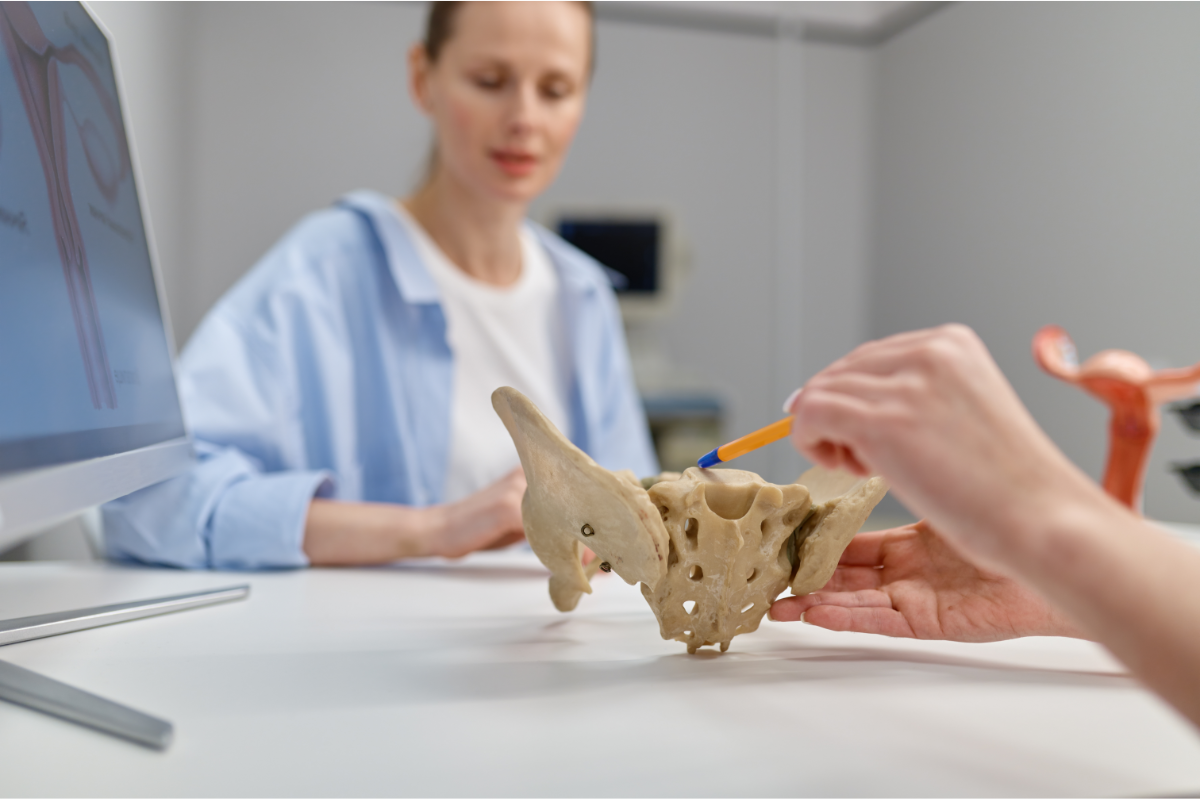What are pelvic floor exercises for after gynecological surgery?
The health of the pelvic floor is a crucial yet often overlooked aspect of women’s health, particularly after gynecological surgery. The pelvic floor consists of a group of muscles and connective tissues that support the pelvic organs, including the bladder, uterus, and rectum. After undergoing surgical procedures such as hysterectomy or pelvic organ prolapse repair, these muscles can become weakened, leading to a variety of complications, including incontinence, pelvic pain, and reduced quality of life.
Understanding the importance of pelvic floor health is essential for recovery. These muscles play a significant role not only in bodily functions but also in sexual health and overall well-being. When weakened, they can lead to physical and emotional challenges, affecting daily activities and self-esteem. This is where pelvic floor exercises come into play.
Pelvic floor exercises, commonly known as Kegel exercises, involve the intentional contraction and relaxation of the pelvic muscles. They are designed to strengthen these muscles, improve control, and enhance overall pelvic health. Research has shown that incorporating these exercises into post-surgical recovery can help restore muscle function, reduce the risk of complications, and promote a quicker return to normal activities.
In this article, we will explore the significance of pelvic floor exercises following gynecological surgery, the various benefits they offer, and practical guidance on how to effectively incorporate them into your recovery routine. Understanding and prioritizing pelvic floor health can lead to a more comfortable and empowered recovery experience.
Gynecological Surgery and Its Implications
Common Types of Gynecological Surgeries
Gynecological surgeries can vary widely, encompassing a range of procedures aimed at treating conditions affecting the female reproductive system. Some common types include:
- Hysterectomy: The surgical removal of the uterus, often due to fibroids, endometriosis, or cancer.
- Pelvic Organ Prolapse Repair: Procedures to correct the displacement of pelvic organs due to weakened pelvic floor muscles.
- Oophorectomy: The removal of one or both ovaries, commonly performed to treat ovarian cysts or cancer.
- Myomectomy: The surgical removal of fibroids from the uterus, which can cause pain and heavy bleeding.
Each of these surgeries can have a profound impact on the pelvic floor, potentially leading to muscle weakness, altered function, and long-term complications.
Impacts of Surgery on the Pelvic Floor
Following gynecological surgery, the pelvic floor can experience various changes:
- Muscle Weakness: Surgical interventions may lead to direct trauma to the pelvic floor muscles, reducing their strength and elasticity.
- Incontinence: Weak pelvic muscles can contribute to urinary incontinence, where individuals may experience leakage during activities like coughing, sneezing, or exercising.
- Pelvic Pain: Some women may experience chronic pelvic pain due to tension or dysfunction in the pelvic floor muscles.
- Reduced Sexual Function: Alterations in muscle tone and sensitivity can affect sexual enjoyment and satisfaction.
Given these potential implications, addressing pelvic floor health post-surgery is vital for a successful recovery.
Benefits of Pelvic Floor Exercises
Improvement of Muscle Function
Pelvic floor exercises, particularly Kegel exercises, target the specific muscles that support the pelvic organs. Regular practice can enhance muscle strength, coordination, and endurance, helping restore normal function. Strengthening these muscles plays a crucial role in supporting bladder and bowel control.
Prevention of Urinary Incontinence
One of the most significant benefits of pelvic floor exercises is the prevention of urinary incontinence. By improving muscle strength and coordination, these exercises help increase control over urination, significantly reducing the risk of leakage. This improvement can greatly enhance quality of life, allowing individuals to engage in everyday activities without worry.
Increased Comfort and Well-Being
Strengthening the pelvic floor can lead to a greater sense of comfort and well-being. Many women report reduced pelvic pain and discomfort following consistent exercise routines. Additionally, the psychological benefits, such as improved self-esteem and confidence, are invaluable aspects of recovery, allowing women to feel empowered in their bodies.
Types of Pelvic Floor Exercises
Kegel Exercises: How to Do Them Correctly
Kegel exercises involve the contraction and relaxation of pelvic floor muscles. Here’s how to perform them correctly:
- Identify the Right Muscles: To find your pelvic floor muscles, try stopping urination midstream. The muscles you engage are the ones you want to strengthen.
- Performing the Exercise:
- Contract the pelvic muscles and hold for 3-5 seconds.
- Relax the muscles for an equal amount of time.
- Aim for 10-15 repetitions per session.
- Building Up: Gradually increase the duration of the contractions and the number of repetitions as your strength improves.
Other Relevant Practices (Yoga, Pilates, etc.)
In addition to Kegel exercises, other forms of exercise can also benefit the pelvic floor:
- Yoga: Many yoga poses promote pelvic floor engagement and can improve overall flexibility and strength.
- Pilates: Focused on core strength, Pilates also emphasizes the importance of pelvic floor stability, making it a great complement to Kegel exercises.
When and How to Start Exercises After Surgery
Guidelines for the Recovery Period
It’s crucial to consult with a healthcare provider before starting any exercise routine post-surgery. Generally, it’s recommended to begin gentle pelvic floor exercises a few weeks after surgery, depending on individual recovery progress and medical advice.
- Listen to Your Body: Pay attention to how your body feels and avoid any exercises that cause pain or discomfort.
Tips for Incorporating Exercises into Your Routine
- Set a Schedule: Designate specific times during the day to perform your exercises, making it a part of your daily routine.
- Use Reminders: Consider setting alarms or reminders on your phone to ensure you stay consistent.
- Combine with Other Activities: Incorporate pelvic floor exercises into other daily activities, like while watching TV or during commutes.
Possible Challenges and How to Overcome Them
Common Difficulties and Solutions
Women may face various challenges when starting pelvic floor exercises, such as:
- Forgetfulness: It’s easy to forget to do exercises. Keeping a journal or using apps can help track progress and remind you.
- Difficulty Isolating Muscles: Some may struggle to identify and engage the correct muscles. Seeking guidance from a physical therapist can be beneficial.
Importance of Professional Guidance
Consulting with a healthcare professional, such as a physical therapist specializing in pelvic floor health, is highly recommended. They can provide personalized exercise regimens, correct techniques, and additional strategies to overcome challenges. Professional guidance ensures that exercises are performed safely and effectively, maximizing the benefits and supporting a smoother recovery process.
By understanding the implications of gynecological surgery, the benefits of pelvic floor exercises, and how to incorporate them into your routine, you can take proactive steps toward enhancing your pelvic health and overall quality of life.
In summary, the importance of pelvic floor exercises following gynecological surgery cannot be overstated. These exercises serve as a fundamental component of recovery, promoting muscle strength, improving function, and significantly reducing the risk of complications such as urinary incontinence and pelvic pain. By focusing on the health of the pelvic floor, women can enhance their overall well-being and regain a sense of control over their bodies.
Moreover, incorporating pelvic floor exercises into daily routines can lead to a more comfortable recovery process and a positive impact on quality of life. As discussed, exercises like Kegels, combined with other activities such as yoga and Pilates, can provide holistic benefits that extend beyond mere physical recovery. The psychological advantages, including improved self-esteem and confidence, further empower women during their healing journey.
Regular practice of these exercises is essential for achieving the desired outcomes. Consistency, along with mindful attention to body signals, will enhance the effectiveness of the routine. It’s crucial to be patient, as progress may take time, but the long-term benefits will be well worth the effort.
Lastly, seeking professional guidance is highly encouraged. A healthcare provider or pelvic floor specialist can offer tailored advice, monitor progress, and help address any challenges that may arise. By working collaboratively with professionals, women can ensure they are on the right path to optimal pelvic health.
In conclusion, prioritizing pelvic floor exercises post-surgery is an invaluable step toward recovery and overall well-being. By committing to regular practice and seeking appropriate support, women can reclaim their health, comfort, and confidence, paving the way for a brighter and more empowered future.

I’m Hillary Swan, a certified fitness trainer specializing in women’s health and pelvic floor strength. I’m passionate about empowering others to improve their core wellness through targeted exercises. Let’s strengthen our bodies together for a healthier, more confident life.











